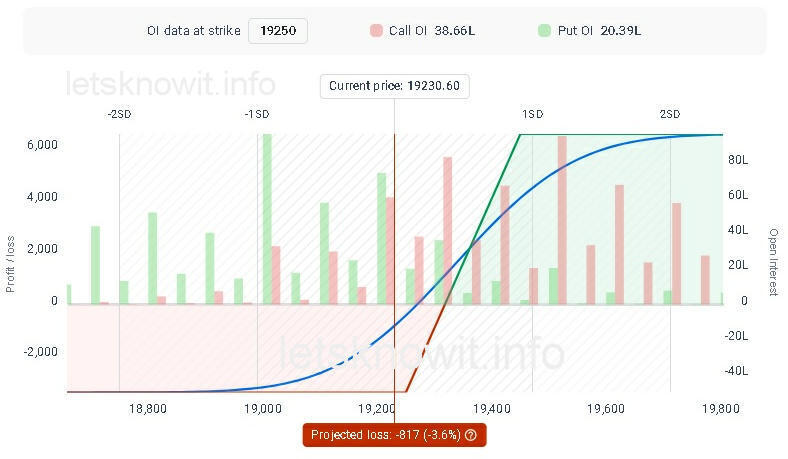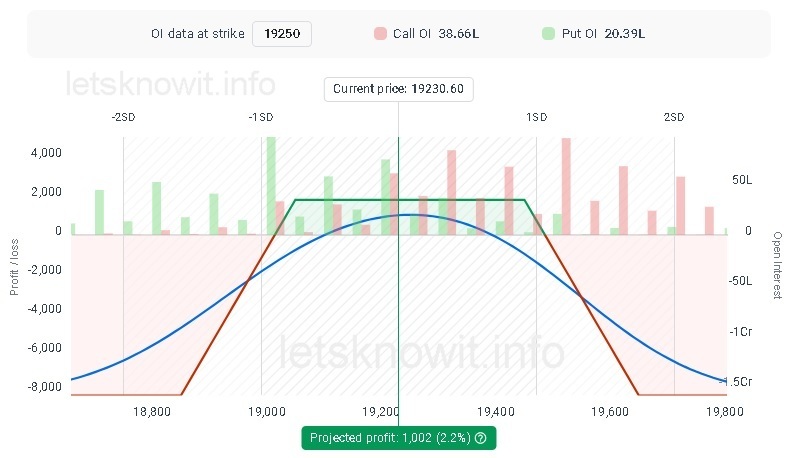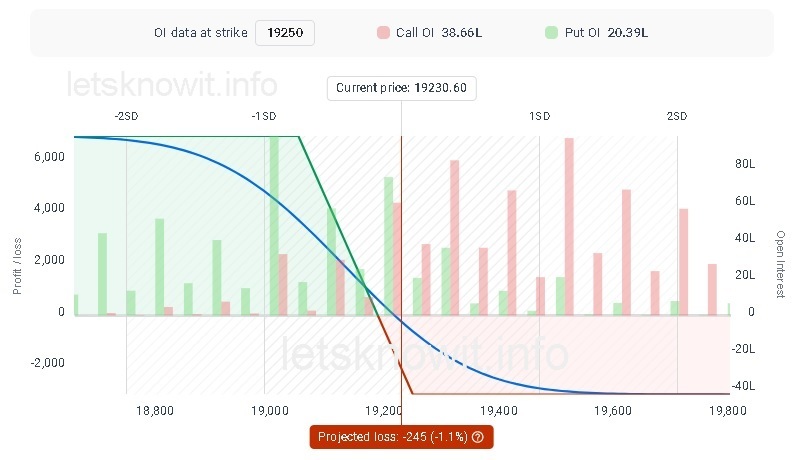When it comes to options trading, one strategy that stands out for its versatility and adaptability to different market conditions is the use of options spreads. Whether you’re navigating a bullish market, a bearish downturn, or a stagnant sideways movement, option spreads offer a toolkit of strategies that can help you optimize your trades and manage risk effectively. In this blog post, we’ll delve into the art of options spreads, providing insights, strategies, and examples to help you make the most of your options trading journey.
Understanding Options Spreads
An options spread is a combination of two or more options positions on the same underlying asset. These strategies are designed to minimize risk while potentially maximizing profits. They offer traders a structured approach to the market, allowing for greater flexibility and customization in their trades.
Key Types of Options Spreads:
- Bullish Spreads: These spreads are designed for when you’re bullish on a stock or underlying asset.
- Bearish Spreads: For those anticipating a downward move in the market.
- Neutral Spreads: Used when you expect little or no price movement.
Options spreads can be categorized into various subtypes, including vertical spreads, horizontal spreads, diagonal spreads, and more. Each has its unique characteristics and applications.
Strategies for Every Market Condition
Let’s explore some of the most popular options spread strategies and their suitability for different market conditions:
1. Bull Call Spread:
- Market Condition: Bullish.
- How It Works: Buy a call option at a lower strike price and simultaneously sell a call option at a higher strike price.
Example: Suppose you’re bullish on Company XYZ, currently trading at $50. You could buy a call option with a strike price of $45 and sell a call option with a strike price of $55. This creates a profit zone between $45 and $55.
A Bull Call Spread, also known as a debit call spread or a vertical call spread, is a bullish strategy that involves buying a call option while simultaneously selling a call option with a higher strike price. This spread strategy is used when you believe the price of the underlying asset will rise but want to limit your initial investment and potential loss.
Illustration:
Let’s assume you are bullish on Company XYZ, which is currently trading at $50 per share. You expect the price to increase, but you want to limit your risk. Here’s a visual representation of the Bull Call Spread:
- Step 1: Buy a Call Option with a Lower Strike Price
- Buy a call option with a strike price of $45 (usually referred to as the lower strike).
- This gives you the right to buy the stock at $45.
- Step 2: Sell a Call Option with a Higher Strike Price
- Simultaneously, sell a call option with a strike price of $55 (referred to as the higher strike).
- This obligates you to sell the stock at $55 if the option is exercised.
- Profit Zone: The area between the lower and higher strike prices is your profit zone. In this case, it’s $45 to $55.
- Risk: The maximum loss is the net premium paid for the lower strike call option, minus the premium received from selling the higher strike call option.
Illustration of how to understand your ‘Bull Call Spread’ on the strategy chart:

In a Bull Call Spread, you have two call options with different strike prices. The profit zone is typically shown as a shaded area on a graph or chart. Here’s a description of what you would see in the image:
- On the horizontal axis, you would have the stock price, ranging from the lower strike price (e.g., $45) to the higher strike price (e.g., $55).
- On the vertical axis, you would see the profit or loss, usually labeled in dollars.
- The image would show two lines: one representing the profit/loss of buying the lower strike call option and another representing the profit/loss of selling the higher strike call option.
- The area between these two lines, within the range of the lower and higher strike prices, would be shaded in green, indicating the profit zone.
- Outside of the profit zone, the area would be shaded in red, representing potential losses.
2. Bear Put Spread:
- Market Condition: Bearish.
- How It Works: Buy a put option at a higher strike price and simultaneously sell a put option at a lower strike price.
Example: If you anticipate a drop in the price of an asset, you might buy a put option with a strike price of $60 and sell a put option with a strike price of $50. This establishes a profit zone between $60 and $50.
A Bull Put Spread, also known as a credit put spread or a vertical put spread, is another bullish strategy. It involves selling a put option with a higher strike price and buying a put option with a lower strike price. This strategy is used when you expect the price of the underlying asset to rise or remain stable.
Illustration:
Suppose you are bullish on Company ABC, currently trading at $60 per share. You anticipate the stock price will increase or remain steady. Here’s an illustration of a Bull Put Spread:
- Step 1: Sell a Put Option with a Higher Strike Price
- Sell a put option with a strike price of $65 (higher strike).
- This obligates you to buy the stock at $65 if the option is exercised by the buyer.
- Step 2: Buy a Put Option with a Lower Strike Price
- Simultaneously, buy a put option with a strike price of $55 (lower strike).
- This gives you the right to sell the stock at $55.
- Profit Zone: The area between the lower and higher strike prices is your profit zone. In this case, it’s $55 to $65.
- Risk: The maximum loss is the difference between the strike prices ($65 – $55), minus the net premium received from selling and buying the put options.
Illustration of how to understand ‘Bull Put Spread’ on strategy chart:

In a Bull Put Spread, you also have two put options with different strike prices. Similarly, the profit zone is typically shown as a shaded area on a graph. Here’s a description of what you would see in the image:
- On the horizontal axis, you would have the stock price, ranging from the lower strike price (e.g., $55) to the higher strike price (e.g., $65).
- On the vertical axis, you would see the profit or loss, labeled in dollars.
- The image would display two lines: one representing the profit/loss of selling the higher strike put option and another representing the profit/loss of buying the lower strike put option.
- The area between these two lines, within the range of the lower and higher strike prices, would be shaded in green, indicating the profit zone.
- Outside of the profit zone, the area would be shaded in red, representing potential losses.
4. Iron Condor:
- Market Condition: Neutral (low volatility).
- How It Works: Combines both a bull put spread and a bear call spread to create a range-bound strategy.
Example: If you believe a stock will trade within a specific price range and not experience significant price movement, you can use an iron condor.
Definition: The Iron Condor is a market-neutral strategy employed when you expect a particular asset to remain within a defined price range with limited volatility. It aims to generate income from the premiums received while minimizing risk.
Key Components of an Iron Condor:
- Short Call Option (Bear Call Spread): You sell an out-of-the-money (OTM) call option with a higher strike price, collecting a premium. This is the first part of the strategy and establishes a bearish outlook.
- Long Call Option (Bear Call Spread): To limit potential losses, you simultaneously buy an OTM call option with a higher strike price than the short call option.
- Short Put Option (Bull Put Spread): You sell an OTM put option with a lower strike price, collecting a premium. This is the second part of the strategy and establishes a bullish outlook.
- Long Put Option (Bull Put Spread): To manage risk, you buy an OTM put option with a lower strike price than the short put option.
How the Iron Condor Works
An Iron Condor involves two credit spreads: the Bear Call Spread (short call and long call) and the Bull Put Spread (short put and long put). Let’s break down the strategy with an example:
Example:
- Imagine you’re trading Company XYZ, currently priced at $100 per share.
- You expect limited price movement and want to create an Iron Condor to capitalize on this low volatility.
Steps:
- Short Call Option: You sell a call option with a strike price of $110 for a premium of $2. This is the bearish leg.
- Long Call Option: To limit potential losses, you simultaneously buy a call option with a strike price of $115 for a premium of $1. This is the hedging leg of the bearish spread.
- Short Put Option: You sell a put option with a strike price of $90 for a premium of $2. This is the bullish leg.
- Long Put Option: To manage risk, you buy a put option with a strike price of $85 for a premium of $1. This is the hedging leg of the bullish spread.
Profit Zone:
In an Iron Condor, the profit zone is established between the strike prices of the short call option ($110) and the short put option ($90). If the stock price remains within this range, you retain the premiums from selling both call and put options.
- If the stock price stays between $90 and $110, you earn the combined premiums from both the call and put options.
Maximum Loss: The maximum loss in an Iron Condor is limited to the difference between the strike prices of the long and short options minus the net premiums received. In this example, the maximum loss would be $5 ($115 – $110 – $1 + $90 – $85 – $1).
You can understand it in another way:

Imagine you’re an options trader, and you’re looking at a stock called Company XYZ, which is currently trading at $100 per share. You expect that this stock won’t move too much in price and will stay within a specific range.
To take advantage of this expectation, you decide to use the Iron Condor strategy. Here’s how it works:
- You sell a call option: This is like making a bet that the stock won’t go above a certain price. Let’s say you sell a call option with a strike price of $110. If the stock doesn’t go above $110, you get to keep the money you received for selling this option (the premium).
- You buy another call option: To protect yourself from potential big losses, you also buy a call option with a higher strike price, like $115. This means that if the stock does unexpectedly go above $115, you can use this option to limit your losses.
- You sell a put option: This is like making a bet that the stock won’t go below a certain price. Imagine selling a put option with a strike price of $90. If the stock doesn’t go below $90, you get to keep the money you received for selling this put option.
- You buy another put option: To protect yourself, you also buy a put option with a lower strike price, like $85. This option helps you limit your losses if the stock drops below $85.
Now, you have created a range, like a safety net. Your profit zone is between the strike prices of your call options ($110 and $115) and your put options ($90 and $85). As long as the stock price stays within this range, you make money from the premiums you received for selling the call and put options.
If the stock stays between $90 and $110, you profit from both sides. If the stock moves too far outside this range, you may have to pay a small amount, but your potential losses are capped.
In summary, the Iron Condor is a strategy that allows you to profit from a stock that doesn’t move much. It’s like building a protective fence around a stock’s price range to generate income while limiting potential losses. It’s a more advanced strategy, so it’s essential to understand it thoroughly and practice it with smaller investments before using it with larger amounts of money.
3. Mastering Bearish Spreads: Strategies for Profitable Trading
When it comes to options trading, the ability to profit from both rising and falling markets is a valuable skill. In this blog post, we’ll delve into the world of bearish spreads—a set of options strategies designed to help you capitalize on declining asset prices. Whether you’re a seasoned trader or just starting, understanding these strategies can give you the edge you need to succeed in bearish market conditions.
What Are Bearish Spreads?
Bearish spreads are options trading strategies that you can employ when you expect the price of the underlying asset to decrease. They are essential tools for hedging against potential market downturns or generating profits from falling prices while managing risk. Here, we’ll explore two common bearish spread strategies:
1. Bear Call Spread:
The Bear Call Spread, also known as a credit call spread or a vertical call spread, is used when you anticipate a bearish market movement in an underlying asset. The process entails selling a call option with a lower strike price and buying a call option with a higher strike price simultaneously. This strategy allows you to limit potential losses and generate income from the premium received.
How It Works:
- You sell a call option with a strike price that you believe the underlying asset will not exceed.
- Simultaneously, you buy a call option with a higher strike price, limiting your potential losses.
- The premium received from selling the lower strike call option helps offset the premium paid for the higher strike call option.
Benefits:
- Limited risk: Your maximum loss is capped at the difference between the strike prices minus the net premium received.
- Income generation: You receive a premium upfront, which can be profitable if the underlying asset’s price remains below the sold call option’s strike price.
Example:
Suppose you’re bearish on Stock XYZ, trading at $50. You sell a call option with a $55 strike price for $2 and buy a call option with a $60 strike price for $1. You receive a net premium of $1. If the stock’s price remains below $55, you keep the $1 premium as profit.
2. Bear Put Spread:
The Bear Put Spread, also known as a debit put spread or a vertical put spread, is a bearish strategy designed for those who expect a decline in the underlying asset’s price. The process involves buying a put option with a high strike price and simultaneously selling a put option with a lower strike price. This strategy aims to limit the initial investment while allowing for potential profits in a falling market.
How It Works:
- You buy a put option with a higher strike price, giving you the right to sell the underlying asset at that price.
- Simultaneously, you sell a put option with a lower strike price, receiving a premium.
Benefits:
- Limited risk: Your maximum loss is capped at the difference between the strike prices minus the net premium received.
- Cost-effective: The premium received from selling the lower strike put option can offset the cost of buying the higher strike put option.
Example:
Suppose you’re bearish on Company ABC, trading at $60. You buy a put option with a $65 strike price for $2 and sell a put option with a $55 strike price for $1. You pay a net premium of $1. If the stock’s price falls below $55, you can profit from the price difference.
Further Illustration:
Bear Call Spread:
Definition: A Bear Call Spread is an options trading strategy used when you have a mildly bearish outlook on the underlying asset. This strategy involves selling a call option with a lower strike price while simultaneously buying a call option with a higher strike price.
Key Components:
- Call Option (Short): In a Bear Call Spread, you start by selling (shorting) a call option with a lower strike price. This is a bearish position because you profit if the underlying asset’s price falls or remains below the strike price.
- Call Option (Long): Simultaneously, you buy a call option with a higher strike price. This call option with a higher strike acts as a hedge, limiting your potential losses if the underlying asset’s price rises.
How It Works:

Let’s illustrate a Bear Call Spread with an example:
- Suppose you’re bearish on Company XYZ, which is currently trading at $50 per share.
- You decide to implement a Bear Call Spread.
Steps:
- Sell a Call Option: You sell a call option with a strike price of $55 for a premium of $2 per share. This means you have an obligation to sell Company XYZ’s stock at $55 if the option is exercised.
- Buy a Call Option: To limit potential losses, you buy a call option with a strike price of $60 for a premium of $1 per share. This gives you the right to buy Company XYZ’s stock at $60 if needed.
Profit Zone:
In this Bear Call Spread, your profit zone is between $55 (the strike price of the short call option) and $60 (the strike price of the long call option).
- If the stock price remains below $55, both options expire worthless, and you keep the premium received from selling the call option ($2 per share).
- If the stock price rises but remains below $55, you retain the premium and your potential loss is limited to the difference between the strike prices ($60 – $55) minus the net premium received ($2 – $1).
Maximum Loss: The maximum loss in a Bear Call Spread is the difference between the strike prices ($60 – $55) minus the net premium received ($2 – $1), which is $4 per share.
Bear Put Spread:
Definition: A Bear Put Spread is an options strategy employed when you have a strongly bearish outlook on the underlying asset. It involves selling a put option with a higher strike price and simultaneously buying a put option with a lower strike price.
Key Components:
- Put Option (Short): In a Bear Put Spread, you initiate the strategy by selling (shorting) a put option with a higher strike price. This is a bearish position, and you profit if the underlying asset’s price falls or remains below the strike price.
- Put Option (Long): To manage risk, you buy a put option with a lower strike price, acting as a hedge.
How It Works:

Let’s illustrate a Bear Put Spread with an example:
- Suppose you are strongly bearish on Company ABC, currently trading at $60 per share.
- You decide to implement a Bear Put Spread.
Steps:
- Sell a Put Option: You sell a put option with a strike price of $65 for a premium of $3 per share. This means you have an obligation to buy Company ABC’s stock at $65 if the option is exercised.
- Buy a Put Option: To limit potential losses, you buy a put option with a strike price of $55 for a premium of $1 per share. This gives you the right to sell Company ABC’s stock at $55 if needed.
Profit Zone:
In a Bear Put Spread, your profit zone is between $55 (the strike price of the long put option) and $65 (the strike price of the short put option).
- If the stock price remains above $65, both options expire worthless, and you keep the premium received from selling the put option ($3 per share).
- If the stock price drops and remains below $65 but above $55, you retain the premium and your potential loss is limited to the difference between the strike prices ($65 – $55) minus the net premium received ($3 – $1).
Maximum Loss: The maximum loss in a Bear Put Spread is the difference between the strike prices ($65 – $55) minus the net premium received ($3 – $1), which is $7 per share.
Benefits of Using Options Spreads
- Risk Management: Options spreads limit potential losses by offsetting positions against each other.
- Versatility: Options spreads can be adapted to various market scenarios, providing traders with flexible tools.
- Income Generation: Certain spread strategies, like credit spreads, can generate income from the premium received.
- Defined Risk and Reward: Traders know their maximum potential gain and loss before entering a trade.
Conclusion
Mastering the art of options spreads empowers you to navigate the complexities of the financial markets with precision. As you explore the strategies suited to different market conditions, you’ll gain a more comprehensive understanding of how to make informed choices and manage your risk effectively.
Remember that options trading carries inherent risks, and it’s essential to conduct thorough research and practice with paper trading or virtual accounts before engaging in real trades. Additionally, consider seeking guidance from experienced traders or financial professionals to fine-tune your options spread skills.
By integrating these strategies into your trading toolkit, you’ll be better equipped to adapt to changing market conditions and potentially monetize your options trading endeavors more effectively. Happy trading!

Comments are closed.